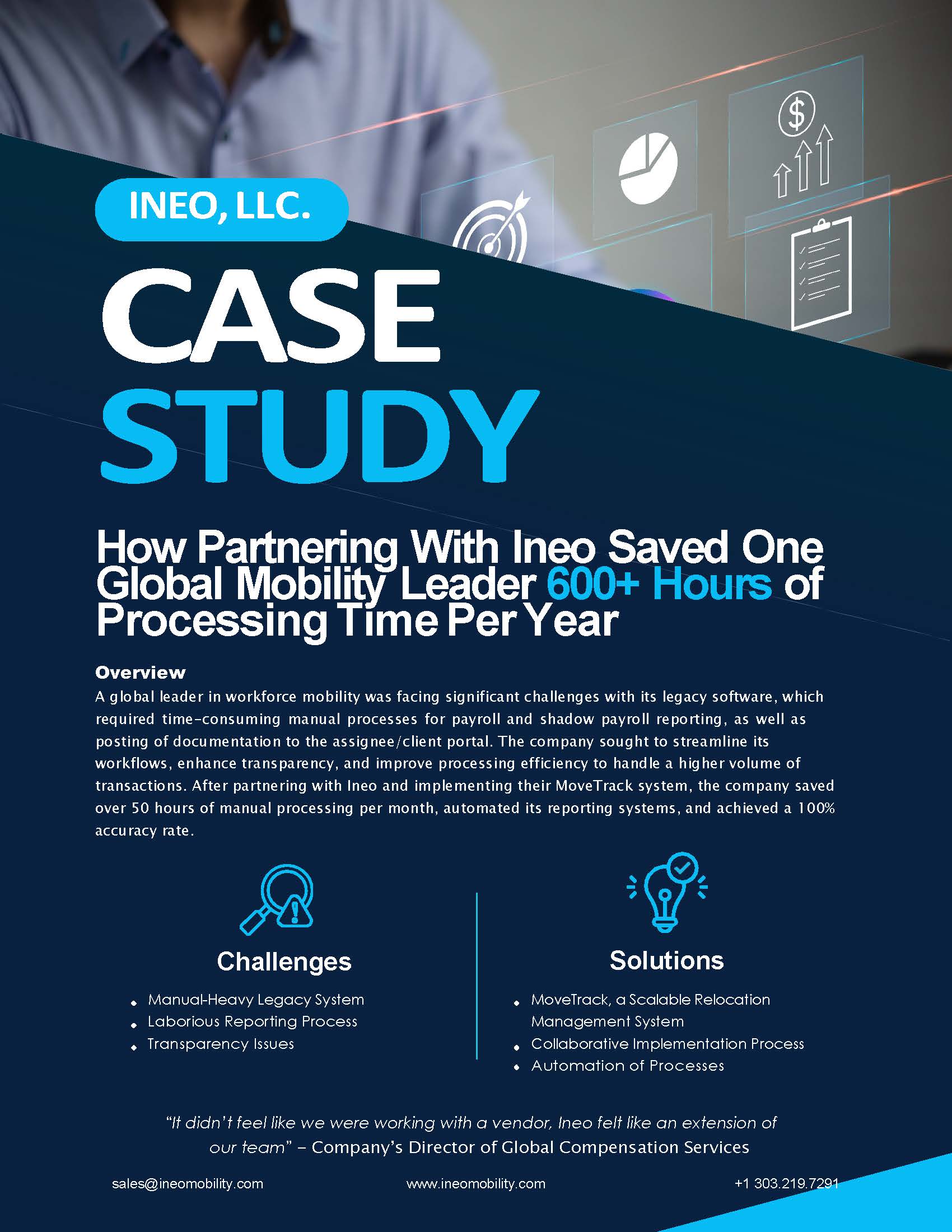The Role of Relocation Tax Gross-ups in Your Mobility Program

A relocation tax gross-up might be the missing piece in your mobility assignment success plan.
The benefits of a mobility program are undeniably numerous, but unfortunately, investing in a relocation assignment can come with a premium price tag for employers – and, occasionally, their assignees. If employees are left footing their own relocation bills, they are less likely to accept relocation roles and more likely to feel dissatisfied from unmet expectations. How can your mobility program minimize the possibility of your assignees taking on expensive tax liabilities due to their relocation?
Tax gross-ups deliver a simple way to enhance your employee’s relocation experience, strengthen the success rates of your assignments, and reduce the risk of attrition.
What is a tax gross-up?
A tax gross-up refers to a compensation an employer provides an employee to offset additional income taxes the employee would owe the IRS after receiving employer-paid cash benefits, such as relocation expense reimbursements.
Because cash benefits are considered taxable income, an employee receiving cash benefits becomes accountable for the taxes incurred on the benefit payment. To compensate, the employer provides a gross-up so that the net amount after required tax withholding will be precise.
If calculated correctly, grossing-up guarantees the employee won’t have to pay out of pocket to cover taxes collected on their reimbursement.
Why are tax gross-ups needed in global mobility policies?
Years ago, Congress became concerned that companies were becoming too generous in their relocation benefits to incentivize employees to accept assignments. Congress voted to revoke the deductibility status of many excessive relocation benefit expenses to counteract this. The overly abundant travel allowances, luxurious temporary living arrangements, and house hunting trips of yesteryear are now treated as non-deductible “bonuses.”
After Congress’ ruling, only necessary and justifiable costs are considered deductible. These essential expenses include charges such as one-way transportation of household goods, conveying personal effects, and required travel.
Why should your mobility program adopt a gross-up policy?
With many legitimately incurred moving expenses losing their tax deductibility status, mobility programs sought an alternative to encourage employees to accept assignments. This alternative emerged in the form of relocation tax gross-ups.
Many global mobility programs now gross-up relocation expense reimbursements to cover taxes, including the tax on the reimbursement itself. This approach ensures the employee still receives a dollar net of taxes for each dollar they spent on a taxable moving expense. Gross-ups ensure the assignee will avoid taking the tax “hit” for legitimately incurred moving expenses that are no longer considered tax-deductible.
Including gross-ups in your mobility benefit policy can improve employee satisfaction, increase assignment success, and encourage assignee retention. Not only do gross-ups bolster assignee morale, but they also reinforce the success of your global mobility program.
Four methods of calculating relocation tax gross-ups
To successfully calculate a gross-up, an employer must follow a formula known as a “net-to-gross calculation.”
Supplemental Method
The supplemental method (the most commonly used by many payroll departments) calculates an assignee’s total federal tax liability using the IRS’s Supplemental Rate Table (currently 22%). This approach considers relocation expenses and reimbursements as taxable income. The supplemental gross-up method does not consider the phase-out of deductions, exemptions, and familial credits.
Marginal Method
The marginal method calculates the transferee’s predicted taxable income before accepting the relocation expense reimbursement. The company then compares the estimated taxable income to the IRS Tax Tables, establishing an employee’s tax bracket and the tax assistance amount.
Flat or Fixed Rate Method
Companies that use the flat (or fixed) rate method considering all Federal, State, Local, and FICA and Medicare taxes determine a designated percentage for tax calculation, i.e., 50%. This option does not consider deductions, exemptions, child credits, or any of the new recently enacted stimulus tax credits.
Tax-Return or Statute Method
The tax-return (or statue) method calculates a transferee’s tax liability before and after receiving the expense reimbursement. This is the method used by companies whose goal is to “keep their employees whole” or “tax protect their employees” covering most of the additional taxes caused by the move. The distinction between the two calculations is the gross-up amount. The tax-return or statute strategy results in a blended tax rate and considers the phase-out of deductions, exemptions, and child credits.
Keep in mind that most companies don’t regard spousal income when calculating a gross-up. Only the assignee’s income is evaluated when determining the proper tax bracket for the gross-up.
Subtract mistakes from your relocation gross-up calculations
Without accurate estimation and reporting, the whole of your global mobility program suffers. Ineo ensures precision and ease with our complete global mobility solutions, including gross-up calculations and audits. Contact us today to discover how partnering with Ineo can advance your mobility program.
Global Mobility Resources
Learn more about what’s going on at Ineo and insights into the complex world of global mobility from the industry’s top thought leaders and innovators.
Request A Demo
Whether you are new to the world of global mobility or you’ve been in the business for a while, Ineo is here to assist you.
The best way to learn how Ineo’s global mobility software can help your company revolutionize your global mobility program and support your business strategy is to see it in a demo.
Fill out this form to get started today.
Get Started






